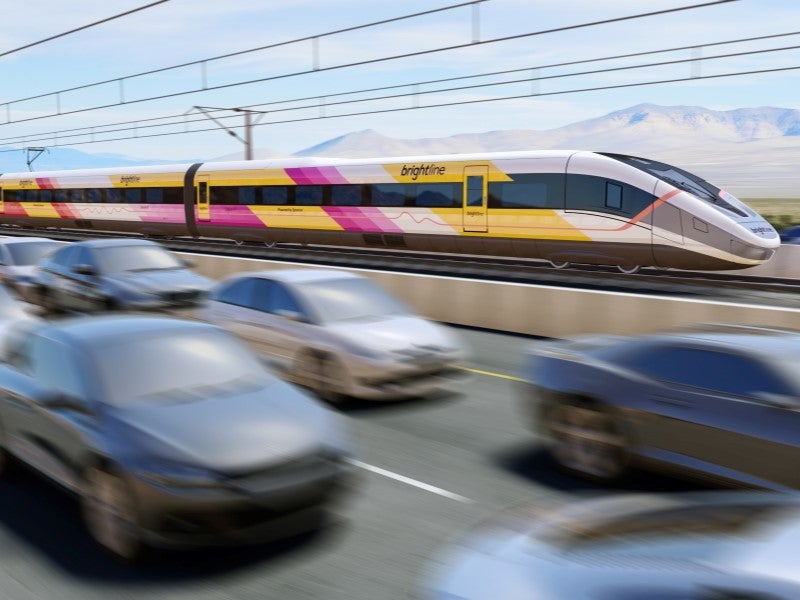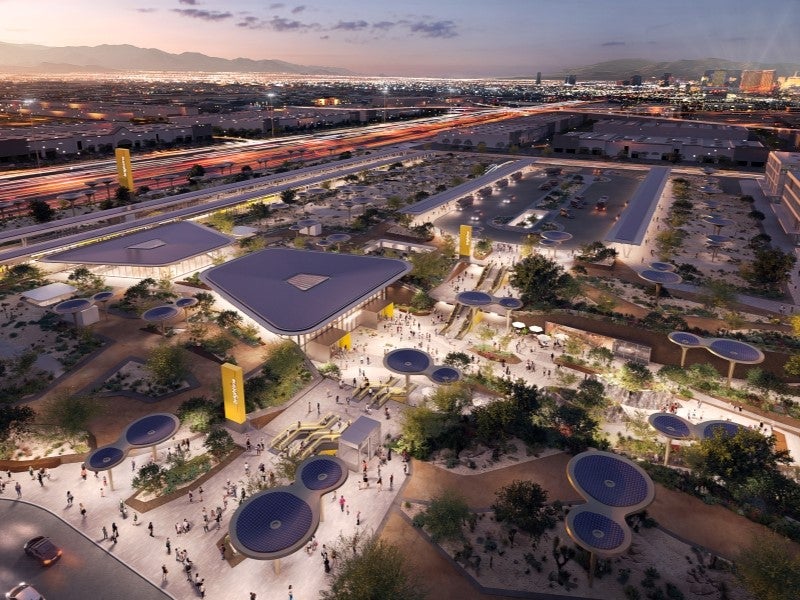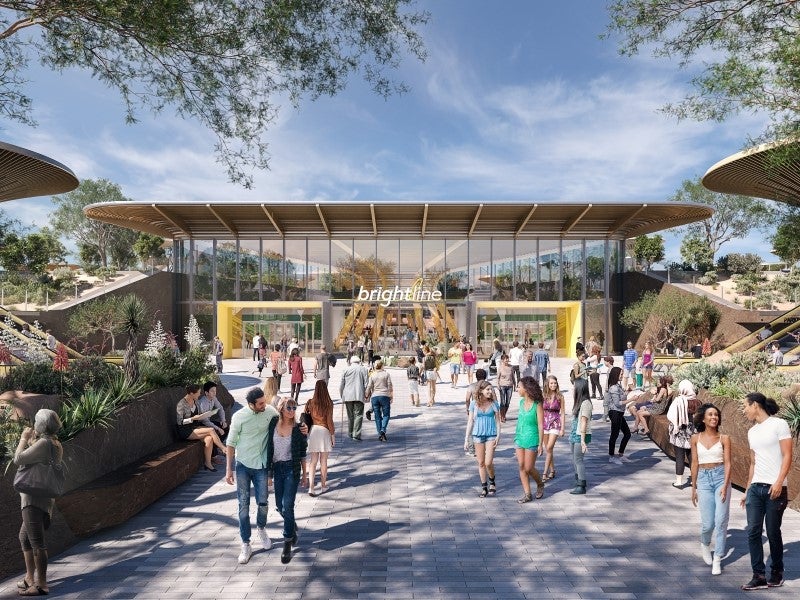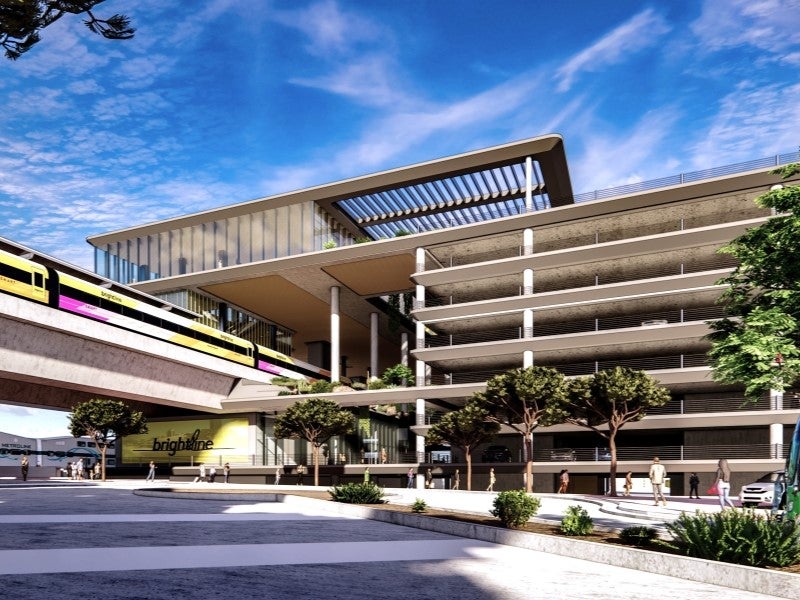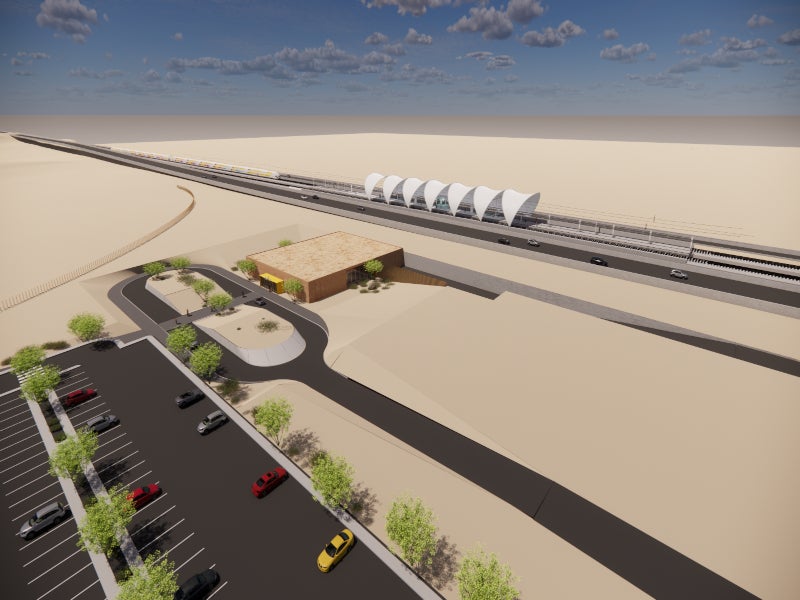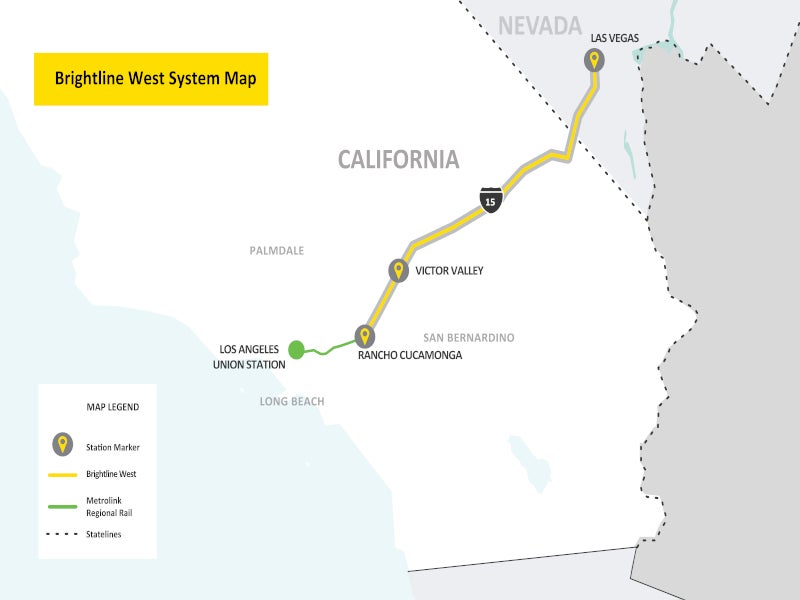Brightline West, a rail transportation services provider and an affiliated company of Brightline, will construct a 218-mile (351km) high-speed rail system to connect Las Vegas, Nevada, with Southern California in the US.
The high-speed rail project involves an estimated investment of $12bn. The ground-breaking ceremony for the project was held in April 2024.
The commencement of rail services is projected for 2028 to serve the Los Angeles Summer Olympic Games.
The high-speed rail is expected to serve nearly 11 million passengers annually upon completion. It will reduce the travel time between Las Vegas and Rancho Cucamonga, California, to approximately two hours and ten minutes, two times faster than driving.
The project is projected to generate more than 35,000 jobs during the construction phase, with an additional 1,000 permanent positions post-completion.
Location of Brightline West rail project
The rail project is designed to run along the median of the Interstate-15 (I-15) highway without grade crossings.
Brightline West high-speed rail system development details
The Las Vegas-Southern California corridor is recognised as one of the most frequented travel routes in the US, with more than 50 million annual trips. Las Vegas remains a global tourist destination, with 4.7 million international visitors annually.
The I-15 corridor often experiences traffic congestion, which the new rail system aims to alleviate by offering a faster transportation alternative.
Brightline West entered a memorandum of understanding (MOU) with the California State Transportation Agency (CalSTA), the California Department of Transportation (Caltrans), and the California High-Speed Rail Authority (CHSRA) for the construction of the line between Las Vegas and Apple Valley, California (LV/AV Line) in January 2019, and later in April 2021 to advance the construction between Apple Valley and Rancho Cucamonga (AV/RC Line).
For the project, the company also collaborated with several other stakeholders, including the Nevada Department of Transportation, the US Federal Railroad Administration (FRA), the Federal Highway Administration, the Bureau of Land Management, Metrolink, the San Bernardino County Transportation Authority, the Town of Apple Valley, and the City of Rancho Cucamonga.
Brightline West high-speed rail project details
The Brightline West high-speed rail project will operate from Las Vegas to Rancho Cucamonga, including stations in Las Vegas, Apple Valley, Hesperia, and Rancho Cucamonga.
The project will encompass the construction of more than 160 structures such as viaducts and bridges, as well as comply with the Buy America Act.
Additionally, a vehicle maintenance facility (VMF) is planned for Sloan, Nevada, covering 200,000ft² (18,580.6m²) on a 238-acre (96.3ha) site. The facility will serve as the central location for daily train maintenance and operations.
The site will also house one of two maintenance of way operations and the operations control centre, with a second facility adjacent to the Apple Valley station.
Details of stations along Brightline West rail project
The Las Vegas Station, situated on a 110-acre site near the Las Vegas Strip, will offer an 80,000ft² facility with parking, providing easy access to local landmarks and transportation hubs.
The Victor Valley Station in Apple Valley will occupy a 300-acre site and include a 20,000ft² station with parking. It could also function as the future hub to connect to the High Desert Corridor and California High-Speed Rail systems.
Hesperia, California, will host the Hesperia Station within the I-15 median at the I-15/Joshua Street interchange, catering to local commuters, making trips between High Desert and Greater Los Angeles, with weekday train services.
The Southern California Station or Rancho Cucamonga Station, will be strategically co-located at the northwest corner of Milliken Avenue and Azusa Court near Ontario International Airport with existing multi-modal transportation networks, including Metrolink, on a five-acre site. It will feature an 80,000ft² facility with parking.
Rolling stock
The project will introduce the state-of-the-art American Pioneer 220 (AP 220) high-speed trains on the line, capable of reaching speeds up to 220 miles per hour (354km/h). The seven-car trains will be energy-efficient, requiring less maintenance due to advanced data collection systems. It will carry between 434 and 450 passengers, depending on final configuration.
The trains are expected to meet Rail Vehicles Access Advisory Committee (RVAAC) guidelines and Americans with Disabilities Act (ADA) standards, offering enhanced accessibility and comfort to passengers.
The propulsion system, lighter weight, wide body and aerodynamic shape will make the train more efficient than other high-speed trains. The rail line will include 322 miles of California High-Speed Rail and 3.4 million square feet of retaining walls. These lines will be suspended along the entirety of the right-of-way to provide consistent power to the trains.
Environmental benefits
The rail project is projected to reduce greenhouse gas emissions by more than 400,000tpa and vehicle miles travelled by more than 700 million each year. This could also result in 16,000 fewer short-haul flights a year.
It emphasises environmental benefits by employing fully-electric, zero-emission high-speed trains, a sustainable option for the busy travel corridor.
The project is also expected to source the majority of its electricity from green power providers and aims for 100% emission-free power by 2045.
Financing
Funding for the project includes $3bn from the US President Joe Biden’s Bipartisan Infrastructure Bill and $3.5bn in private activity bonds from the US Department of Transportation (USDOT). The remaining amount for the project will be privately funded.
Contractors involved
Grimshaw, an architectural company, is the lead architect of the project while Arup, a design company, is supporting the architect by providing structural, mechanical, electrical, and plumbing engineering, as well as facade, lighting and acoustic services.
Atlas Technical Consultants (Atlas), an infrastructure and environmental solutions provider, was appointed for geotechnical engineering and design services for the project in April 2023.
Brightline selected Siemens Mobility to manufacture, test and supply a fleet of ten AP 220 train sets in May 2024. The contract also includes 30 years of rolling stock maintenance, to be conducted at Brightline’s vehicle maintenance facility in Sloan, Nevada.
HNTB, an engineering company, is providing planning / concept design, preliminary engineering, final design and environmental documentation services for the project.
Rincon Consultants was chosen as the environmental compliance consultant to offer environmental permitting and compliance support during the design, construction, and post-construction phases of the Brightline West high-speed rail project.

